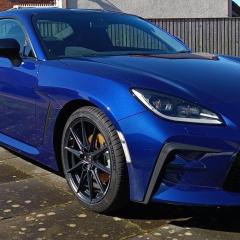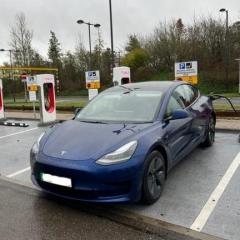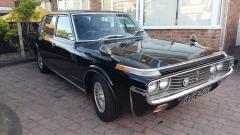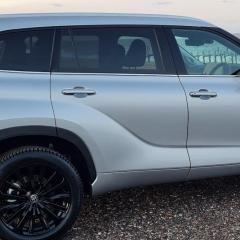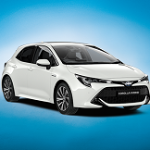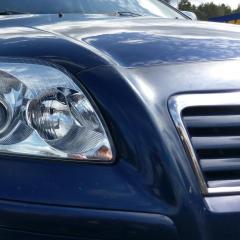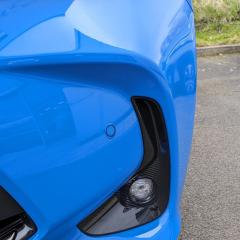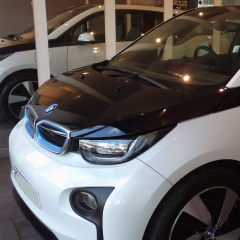Leaderboard
Popular Content
Showing content with the highest reputation on 09/14/2019 in all areas
-
We were on holiday recently - for 14 days - and on our return the battery of our 2018 Yaris was dead. Dealer said that battery would lose charge if car was not used for 3 days. Claimed that all the systems (like collision warning, etc) were still working even when the car was not is use - parked and locked. I suspect that the "3 days" was an exaggeration. Does anyone have any experience/knowledge of this topic?1 point
-
I will be adding to this post when time allows We will start with the simple stuff Touch2 Gen 1 (with surround) Touch2 Gen 2 (one piece) Access to the service menu. Press and hold the music or car button and turn the sidelights on and off 3 times - some cars with the touch2 you pull the hand brake up and down 3 times To access the Hidden Diag Menu from the Service Menu touch the bottom right and left corners 3 times each eg. Right ---- Left, Right ---- Left, Right ---- Left, some times it takes a few extra presses 2/3 TOUCH SW Adjust allows you to re calibrate the touch screen Connectors All connectors are Sumitomo apart from DA USB, EXT USB and E1/LVDS what are JAE E1/LVDS connectors are JAE MX48 these Plugs are not avalible to the public (you can freely purchase the pcb/smd sockets tho) When you have the nav module connected the DA USB is not used as the Nav Module handles the bluetooth and usb it then communicates back to the Touch2 (DA) via LVDS If your unlucky enough to get a touch2 with the nav module without the nav wire (patch harness) the only real option is to purchase it from the main dealer 86842-12010 £57+vat at the time of posting1 point
-
1 point
-
I've spent the last week fitting custom made plates to Auris's for a hire company. They cost £9 to manufacture, and perhaps £2 in fittings. Takes around 8 minutes to fit too (after doing a few!).1 point
-
1 point
-
At junctions and traffic lights, I always set the handbrake and take my foot off the brake. This stops the annoying brake lights upsetting the vehicle behind. If I'm facing downhill, the handbrake needs to be on tighter than pointing uphill or on the level, as I always leave the car in Drive. Selecting Park and then back to Drive to move off is a hassle plus there's a silly flash of the reversing light as you pass through Park to Drive, and you have to re-press the brake pedal too .................. so I leave it in Drive. Going to Neutral and setting the handbrake is simple and quick, as it going from Neutral to Drive to move away as it's only a single move and you can do this without pressing the brake pedal. What is the issue here? Does it matter? What do other Hybrid users do? Mick.1 point
-
“P” is for Park and is only meant to be used when the vehicle is parked because it locks the gearbox.1 point
-
Highway Code rule 114 says; In stationary queues of traffic, drivers should apply the parking brake and, once the following traffic has stopped, take their foot off the footbrake to deactivate the vehicle brake lights. The idea of keeping your foot on the brake until they stop is to warn the people behind. I always keep my foot on the brake until I am happy that I am safe from the people behind.1 point
-
My battery lasted the 4 years that I owned my hybrid, no sign of it failing when I sold the car.1 point
-
I bought a space-saver plus jack etc from eBay. £60odd if my memory serves me. I just went to the eBay site and put in my tyres size and 2014 Yaris. Since given away the gunge and the electric pump to someone who wanted it. Goodness knows why anyone wants them! Mick.1 point
-
1 point
-
1 point
-
I've tested out another Mclaren cleaning product, and thought I'd share my view on it with you all.1 point
-
Yes, you're correct of course, but I'm not sure about three people pushing a Yaris up a 25% hill! 🤣 I had a small experiment earlier today. We have a steep drive, easily 25% maybe 30% and it's just under 100yds long gate to house. Because of the shape of the drive as it enters the lane, it's necessary to reverse up if you come from one way, and forwards if you come from the other way ........... if you see what I mean. Anyway, I reversed up and came up as fast as I could. Just as I selected reverse, the reversing camera came on of course, but I switched the screen over to to show the battery state etc. before setting off up. It was full to start, as it often is as we come home due to living in a long steep valley, but after thrashing the car in reverse up the steep drive, I ended up with only six bars showing. The engine didn't start up as I reversed. This means, that within 100yds in reverse up a steep hill driving quickly, it consumes two bars of the battery. Taking this argument to extreme, 200yds it would be down to half battery, and 400yds it would be empty. What I could do, is to repeat the test one after the other, but select neutral and coast back down before reversing hard back up again. Would that be a valid experiment? Can the engine replenish the battery enough to carry on ad infinitum? Mick.1 point
-
Mick Hi, your 4 pax could get out (and push??) The gear ratio is the same going Fwd or Rev, as it's an Epicyclic system. In theory on a flat surface you could do about 25mph fwd or rev.1 point
-
That's another issue. What equivalent gearing does a hybrid use? There's so much torque with an electric motor, the "bottom" gear doesn't have to be that low. No doubt reverse is the same as forward. Mick.1 point
-
22bhp for a 25% hill? Dunno at all about that. I was considering trying it to see what happens. Going forwards gently with 7 or 8 bars green with the system warm, I can get up some of the hill, but the engine starts up within 200yds or so. No doubt the battery is getting too hot and the engine takes over. The way I see it, in reverse, the engine cannot take over, and the battery alone has to get you up the hill. Can the engine provide enough power to replace the energy consumed from the battery? Is 22bhp enough for a 25% hill? What happens if you have five adults in the car? I reckon 22bhp won't do it and the battery will stop producing power and the car will stop with the engine racing to try and top it up enough to carry on. I'll have to give it a go. 😀 Mick.1 point
-
I understand how regen works when the car is on "over run" slowing down. The electric motors are "driven" and therefore turn into generators. How does the regen increase when the brakes are applied? Is the braking circuit recognised by something and it increases the generator output? How does it do it? Mick.1 point
-
I agree it is more rust that is the dust. I do travel regularly on the motorway and these days the braking on the slip road is enough to keep the rust at bay. Sent from my iPhone using Tapatalk1 point
-
I had my Yaris hybrid for 4 years, rear disks replaced due to corrosion after about 10 months. What accumulates around the rear wheels is rust-dust rather than anything from the pads ! The brake system was checked for balance and the situation improved slightly after a bleed of the system. As the handbrake actually uses the rear pads, to keep the disks relatively rust-free I used a couple of seconds of the handbrake every now and then when I noticed a build up of rust.1 point
-
Be aware you don't have to use B mode, but if it helps to maintain control then of course that's fine. Using baking alone recovers more energy unless: 1. the hill is too steep to hold speed with regenerative braking alone, or 2. the HV battery has 'maxed out ' and won't take any more energy. Note: this occurs quite a while after the 8th bar on the battery guage has lit. In the latter case, I'm told more recent versions of the Hybrid systems (from 2009 Gen 3 Prius onwards) automatically enter something like B mode when the battery has maxed whether it's selected or not.1 point
-
Just been checking ................... No brake dust on our rear wheels, and I can't remember seeing any either. The dirt is road dirt, not brake dust. We live in a steep valley, and a hilly area too, and brakes - or should I say breaking - is/are used frequently just getting out and about. We use the B gear coming down the hills many times too. Mick.1 point
-
Both of my petrol Auris had the same from new - rear wheels accumulating more brake dust than the fronts.1 point
-
It's all down to amount of use and type of braking. I recently read a post (somewhere) from a US owner with over 200,000 miles on original discs and pads. My last Gen 3 Prius had less than a quarter wear at 60k when I sold it, and my current Gen 4 at 37k shows the same very low wear. I try to plan ahead to get the best regen energy recovery, as well as smooth and comfortable progress. Since Gen 2, cars have had a Hybrid System Indication which I use to good efect (plus in the Gen 3/4 Prius the HSI is visible in the Head Up Display). I know another owner whose brakes were fine at 100,000 on a Gen 2 when he sold it (although his was garaged, unlike mine). My last Gen 1 Prius had minimal wear showing as the car reached 70k, but then for a year I used a company Prius and mine only got driven once very week or two, and then usually for short journeys. As Scott said, the rust was the killer, and the brakes were very noisy with grinding sounds and all the discs/pads needed replacing within the next 10k miles. The car was then used daily until I sold it at 9 years old with 163k and the discs/pads were still well under half used. This car was not garaged either. From 2007-2011 I was manager of a fleet of Prius London minicabs (about 40 cars when I started and nearly 300 when I left), and some (but my no means all) drivers managed to wear out their brakes from using them enough in slow traffic (earlier generations only used the disc brakes below 7 mph, later versions from 5 mph) and hard enough above that to use the disc brakes as well as the regen.1 point
-
It is not unknown for hybrids to need replacement rear discs more often than normal cars due to corrosion as they do so little friction braking that they don't clean surface rust from the rear discs as a normal car would & it gets a firmer hold on the disc. & of course, when you replace discs you should also fit new pads.1 point
-
Thanks guys. This is all very interesting eh? It seems very mysterious how this all works together for braking. Our car is the first one ever that it's the rear wheels that get dirtier than the fronts. "Normal" cars have loads of brake dust on the front wheels and ours never has. The only dirt on the wheels is road dirt. This must mean that pads and discs must last far longer than on a "normal" car. Mick.1 point
-
Brakes in the Hybrid are fly-by-wire when you press the brake pedal a sensor detects speed of application and force applied and from this dependent on vehicle speed and traction decides what method of braking to apply: If you brake normally / sensibly then regen is used, the strength of the regen is determined by pedal force applied the greater the force the stronger the electromagnetic field created in the motors making them harder to turn and increasing the regen force If you brake harder, suddenly or TRC/ABS is triggered the car will brake conventionally with pads/discs again force is determined by the brake pedal sensors which instruct the brake booster pump to apply hydraulic force to the brakes1 point
-
I've tried all 4 of my Toyota hybrids on ordinary fuels, both from major supermarkets and major companies and also BP Ultimate and Tesco Momentum. No difference on any of them, performance or MPG Never had any fuel systems issues, never needed any magic cleaners or boosters.1 point
-
Hey Mick, So you're talking about a petrol. Petrols definitely don't have nearly as much difference and petrol engines aren't nearly as sensitive to bad petrol as diesels are to bad diesel. If you buy a new diesel and fill it up with supermarket diesel only, you can pull the intake manifold after a year or two and you'd be disgusted at what's in there. Petrols don't have that problem. I guess that's why there's such a contrast of opinions in this thread.1 point
-
Up until a couple of years ago, we ran a Fiat 500 Twinair 85bhp. Absolutely super-dooper car and went like a pocket rocket, but the huge two doors were a pain in the wotsit and the boot space wasn't good. Sad to see it go, but it wasn't practical for us. However, I digress ........... sorry. I always fill up with supermarket fuel. Never ever an issue over all the cars and all the mileage. From first owning the 500TA, I monitored the fuel consumption from full tank to full tank so I knew the MPG we were getting etc. I tried Shell RON99 premium for a while and tried to detect an improvement. To be frank, there wasn't a ha'porth of difference. Best smoothest performance improvement we ever got was changing the spark plugs. Mick.1 point
-
I know plenty about "the subject" thanks and is exactly why I have NEVER filled up with "the cheapest fuel available"! (and I wouldn't touch a diesel with a barge pole either...) Read up on them (after market fuel additives). Most proper tests show that they have a negligible effect on a well maintained and serviced vehicle. By "negligible", I mean an ongoing "repeatable cost benefit" when you use the stuff regularly. Sent from my Pixel 2 XL using Tapatalk1 point
-
The difference can be felt the most by those who regularly fill cheapest fuel available. If you fill premium fuel from reputable brands then such additives don't have nearly as much effect. But to outright say they don't do anything and are snake oil is basically admitting that you don't know enough about the subject. Also, if you suspect that one or more of your diesel injectors are starting to nail, running diesel purge or its fuel additive cousin will make the nailing more pronounced, and so confirming that the noise isn't tappets or bearings inside the engine.1 point
-
I have also had a few hybrids, 2 Prius, one Yaris and a Lexus CT200. They have all been left for 60 odd days, however, always pulled the fuse that runs the equipment that is live with the ignition off (immobiliser/alarm etc). The cars were left in a locked garage which is integral with my house, so does not get too cold. The 12V batteries have always provided enough power to start the electrics and the traction batteries only lose 1 or 2 bars over that time, so they always started first time too.1 point
-
My Yaris GRMN has just started after being left for 62 days, not even a flicker from the dashboard, it cranked normally and fired up within 2 seconds. A 12V battery should not discharge within 3 days unless lights or accessories have been left on by accident.1 point
-
Hi Keith. I think you are right. A fully charged battery should be showing 12.80 volts. If it has been left for a while, say a couple of weeks it should not drop below 12.64 volts. Any readings below this would cause a on going problem especially during any cold weather if and when it arrives. Get your dealer to carry out a voltage resistance drop test, if they cannot do it there are lots of battery sales companies that carry out a free check. Cheers.1 point
-
If you charge your battery fully with a battery charger .................or go for a drive - in good weather not using electrics much - and make the drive a couple of hours or more - your battery will be fully charged. Test the voltage after switching off and letting the battery relax. Give it maybe an hour before testing the voltage. It's difficult in real everyday use to have a fully charged car battery and generally it doesn't matter. Eventually they fail through constant use or neglect. Just coz a car is brand new, it doesn't mean that the battery is as good as new. There is no substitute for a good strong battery. Mick.1 point
-
True what you say about load, Mick. One can buy load testers, but for the private motorist a new battery is probably more cost effective. I've just never had a battery that stayed at 13V.1 point
-
Sorry I was going by another post and probably misread it. An hours drive should put back what a standard starter motor takes out. So it could be a faulty battery. Sent from my iPhone using Tapatalk Pro1 point
-
Toyota hybrids use the 12 volt battery, for things like alarm/central locking, When shut down. When powering on it powers the basic systems The downside is the charging rate is low, maybe you might consider a modern battery charger that you can use while it's in the car. A hybrid car charges at 4amps and if the battery is low it could take 12 hours to charge. Sent from my iPhone using Tapatalk Pro1 point
-
Am I correct in assuming that when you press the “start” button the 12v battery only ‘boots’ the computer and the ICE starter motor is subsequently powered by the hybrid battery? if so, then the ‘start’ drain on the 12v battery should be quite small and quickly recovered?1 point
-
Some journeys are short - about 20 minutes, but most journeys are closer to 1 hour. Let me ask a different question: how long do I need to drive to recover the energy used to start the car?1 point
-
Hmm A battery shouldn't discharge that fast. If a battery only last 3 days, then you have an electrical problem. The only thing that should be drawling power with the car switched off and the doors and boot properly, will be the alarm or remote central locking. That applies to both hybrid and non hybrid cars. Sent from my iPhone using Tapatalk Pro1 point
-
Speaking of Hybrid Assistant, I'm loving Alessandro's sense of humour today! [emoji6] Sent from my Pixel 2 XL using Tapatalk1 point
-
If you have an android device go to google play and search for "hybrid assistance". Apple may also have it?1 point
-
I ran 4 hybrids over the last few years, never seen that monitor go below 2 bars and very rarely does it get to full either. Don't stress about it, just let the system look after the battery. If your force it into EV mode, the battery may go lower than usual, but that is a false economy as the engine will then run for longer to get it into normal range. In the end, I just left it in "D", never bothered with "B", "ECO" or "EV" in normal driving. "EV" only used for 20 feet trips into and out of my garage, just to prevent the engine starting for a very short period.1 point
-
I'm going to continue to use Neutral as it's the best way. The issue of not charging the battery is a red herring I think, especially round here. The battery is never so low that it would any difference whatsoever for a minute or two at traffic lights. Even if it was an issue, the car would alarm at you! In Drive, the system wants to creep forwards, and in Reverse it wants to go backwards of course. If you are stopped with your foot on the brake, the drive is disconnected even though you are in Drive or Reverse. The trouble is, the stupid designers didn't use the handbrake to disconnect the drive like the footbrake does! This means that if you are stopped in Drive with the handbrake on, the car is STILL trying to move .................. ie wasting energy. Selecting Park disconnects the drive of course, but it's a hassle to select it when stopped and deselect it to drive away. Sitting at a junction or at traffic lights with your foot remaining on the brake is against the UK Highway Code, and also bad car control. Neutral and handbrake is the correct way to do it in a manual car, so I don't see why a hybrid would be any different. The main issue really, is that the car creeps in Drive so you have to positively stop it. Mick.1 point
-
The cars only charge in D, R and P and so if the battery level is low and the engine is running, then you must be in one of said 'gears'. If the battery level is high and the engine is running, then it is probably just trying to keep warm, as it were, so using N is probably OK, but not efficient. If you are in D with the handbrake on, you are wasting energy.1 point
-
If you get it right, the GRMN will beat all the other models off the line and after that, no contest. It's also remarkably cheap to insure, only £211 with AVIVA. That's for a 59 year old male, full NCD and 5000 miles a year.1 point
-
I can understand this - I have to have 2 cars for the same affect, one being an old school V8 convertible - good for country lanes and setting off car alarms in multi-storey car parks. Regarding the carwow drag races, I would like to see all the Yaris options in one: petrol, diesel, hybrid and GRMN. My guess would be the hybrid would get to 50 yards first and then the GRMN zooms past to win. Chuck in a Zoe and BMW i3 to add to the mix.1 point
-
I believe that the UK allocation is sold out - 1 of the members here has 1.1 point


